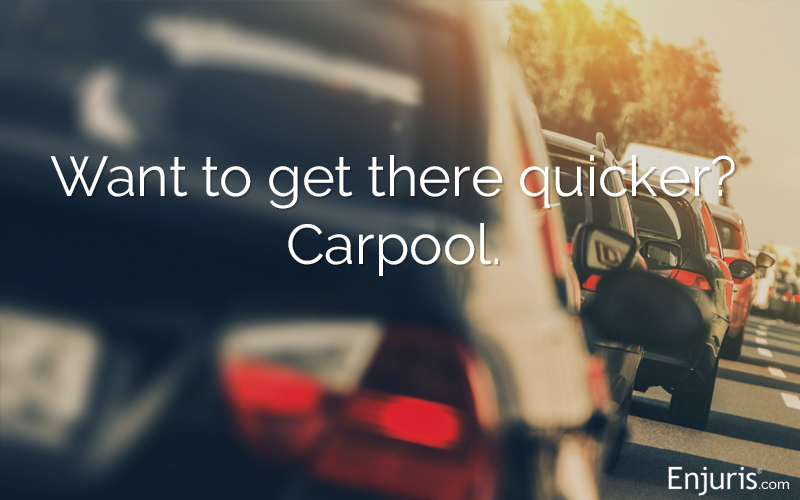Who can use high-occupancy vehicle lanes?
Considering how bad traffic is in California, you have probably found yourself crawling along the highway and looking to your left where traffic seems to be moving briskly in the lane marked by white diamond symbols and thought: Can I drive in that lane?
Here’s what you need to know about high-occupancy vehicle (HOV) lanes in California.
What are HOV lanes?
HOV lanes are lanes that are reserved almost exclusively for the use of vehicles with a driver and 1 or more passengers.
HOV lanes are usually located to the left of unrestricted lanes and are identified by signs along the road and white diamond symbols on the pavement. In some instances, a striped median separates the HOV lane from the unrestricted lane.
In Northern California, HOV lanes are typically operational during posted peak congestion hours. In Southern California, HOV lanes are typically in effect full time.
According to the California Department of Transportation, the goals of HOV lanes are to reduce congestion by encouraging ridesharing (also called “carpooling”) and to improve air quality. A number of studies support the use of HOV lanes to meet these goals:
- “Effectiveness of California’s High Occupancy Vehicle (HOV) System”
- “Modeling the Effectiveness of High Occupancy Vehicle (HOV) Lanes at Improving Air Quality”
- “A Review of HOV Lane Performance and Policy Options in the United States”
Who can use HOV lanes in California?
If you want to drive in an HOV lane in California during its operational hours, your motor vehicle must have 2 or more occupants. There are, however, a few exceptions:
- Certain routes in San Francisco (I-80 and I-880), Los Angeles (I-10 and El Monte Bus Way), and San Diego (I-5 San Ysidro) require 3 or more occupants to access HOV lanes.
- Certain plug-in hybrid, alternative fuel, and clean-air vehicles are exempted from the occupancy requirement. These vehicles can be identified by decals issued by the California Department of Motor Vehicles.
- Motorcycles, public mass transit, and paratransit vehicles are exempted from the occupancy requirement.
The officer handed Sue a ticket.
Sue decided to challenge the traffic ticket in municipal court, arguing that California law considered a fetus to be a child. Ultimately, Judge Randell Wilkinson threw out the ticket rather than rule on the legal status of a fetus.
The California Highway Patrol said that it will continue to issue similar tickets.
“Our officers are not qualified to determine whether a lady is with child,” said Officer Paul Caldwell.
Penalties for violating California’s HOV lane laws
If you’re caught driving in an HOV lane in California without a passenger (or without meeting one of the other HOV lane law requirements), you can be pulled over and issued a $490 fine.
The goal of the California Highway Patrol (CHP) is to keep HOV violation rates to less than 10%. If violations rise above 10%, stronger enforcement measures will be implemented.
The impact of HOV lanes on personal injury claims
HOV lanes help reduce traffic congestion, but accidents can happen anywhere.
A 5-year study of HOV lanes in California found that rear-end and sideswipe collisions comprised more than 90% of all accidents in California HOV lanes. The most dangerous HOV lanes are 24-hour HOV lanes in close proximity to on- or off-ramps.
If you’re injured in a car accident, whether it's inside or outside of an HOV lane, contact an experienced California car accident attorney for help and advice on what to do next.
See our guide Choosing a personal injury attorney.

